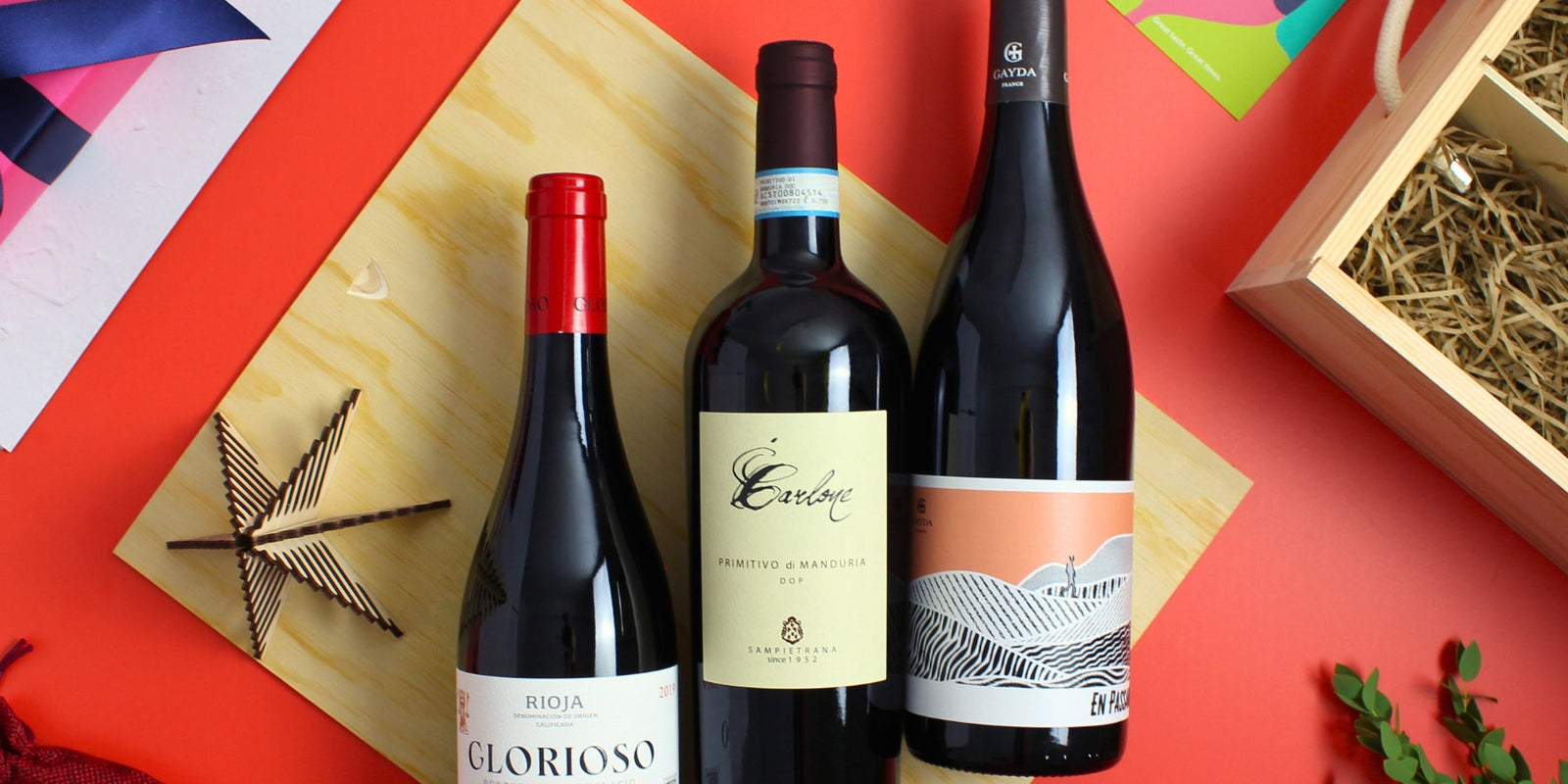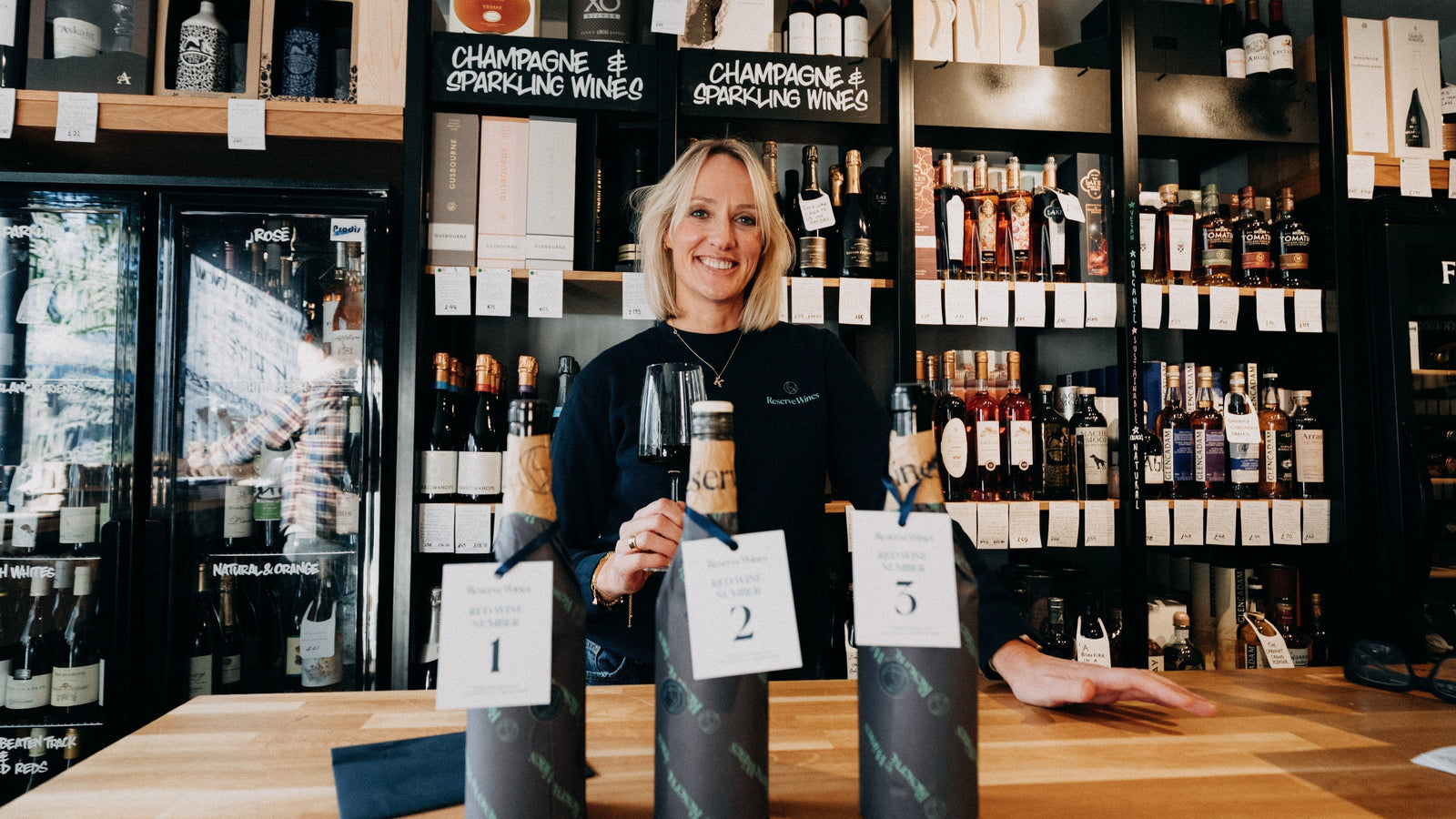Nestled in northern Portugal, the Douro Valley is one of the world's oldest and most beautiful wine regions. Carved by the majestic Douro River, this UNESCO World Heritage site offers a dramatic landscape of steep, terraced vineyards that produce some of the finest wines in the country.
The Douro Valley’s winemaking tradition dates back over 2,000 years, with the region gaining international acclaim for its port wines in the 18th century. Today, the Douro is celebrated not only for its fortified wines but also for its exceptional table wines, which have been gaining popularity since the late 20th century.
A select few team members were invited to visit this region to experience this landscape up close and meet some of the winemakers we work with. Hosted by James Hands - former manager of our Didsbury shop and now a sales rep with our Portuguese specialist supplier Raymond Reynolds. This visit would contrast the modern table wine focused producer Lavradores de Feitoria with Quinta Do Vale Meao, an independent port house with decades of history. It would be a trip that truly showed the connection between the place, the people and the liquid in the bottle.

Arriving a little late into Porto, Nic (Buyer,) David (E-commerce) and Lisa (Mackie Mayor) were joined by James and whisked away by taxi to our hotel before heading out to see the sights of this famous city. The wind was howling and the rain was lashing down as James explained to us how the port houses all had their barrel stores here along the Douro river. The wine was made in Douro, then transported via boat to the cooler riverbank barrel houses of Porto. The names of DOWS, Taylors, Niepoort etc could be seen everywhere you looked. We'd be staying here to soak up a little Portuguese culture before heading over the Douro vineyards the next day.

After some more sightseeing, a little bacalau (salt cod fritters), and port tasting at Ramos Pinto, we venture up a steep cobbled lane to find a wine bar that James recommended. Here we enjoyed the Arribas Saroto Branco - passionately selected by the young owner of the bar whose enthusiasm and knowledge was delivered with relaxed charm - before heading off for dinner.
Lavradores had arranged a table at a fine seafood restaurant across down. Surprisingly, we were served by French waiting staff so Nic took over ordering, arranging a tower of mers that included goose barnacles, snails, langoustines and crab. James chose the zesty and textured Luis Pato Vinhas Velhas and the mineral and intense Soalheiro Alvarinho Granite to accompany this feast and they were the perfect match.

The next morning we were picked up from our hotel and taken on the two hour trip to the Douro valley. The journey by car passes through a tunnel that cuts through the hillside. As soon as we exited through the tunnel the terraces of the Douro were revealed and the car went momentarily quiet as gazed upon the vineyards, cut step by step into the steep sides of the hills of this UNESCO heritage site.

We were treated to a boat ride along the river Douro, enjoying Lavradores de Feitoria's white and rosé blends along with platters of local foods including more bacalhau, sausage and cheeses. These wines were ideal for sipping in the sunshine, with fresh vibrant flavours, zesty acidity and juicy fruit.

"Douro is Passion" - Eduardo Ferreira
Lavradores de Feitoria is one of many newly established producers focusing on still wine instead of port. They are a group of 15-20 farmers who were not wine producers but part-owners of Lavradores. In co-ops the smaller producers do not have ownership, making their model a more equitable deal for all involved. Their focus on still wines allow them access to more markets both locally and around the world.

Winemaker Paulo Ruão has been with Lavradores since 2005 having previously worked for Ramos Pinto.
Over an intimate lunch in the wineries barrel store. Paulo, head of sales Carlo Marques and head of tourism, Eduardo Ferreira, talked about the importance of having a visitor experience at the winery as it allows them to tell their story and stressed the importance of adding context to visitors. It is vital to sell the wine they said.

They find a lot of industry people visit to expand their own understanding of winemaking (as we are doing).
However, it can be difficult for them to show off their native grape varieties as the majority are used in blends which makes it difficult for consumers to connect with grapes like Viosinho.
They feel like Portugal is not there yet for promoting their still wine to consumers - still too known for port.
Pushed to define the red wine of the Douro, the winemaker said: "it is full, deep, jammy, and fresh."
Red grapes are generally grown on the lower vineyards while white grapes varieties are planted higher to take advantage of the cooler temperature at altitude. But this is not always the case. Their own Meruge red uses red fruit grown at altitude.
Of the white wines they produce, those made with the Louisino grape, most excited the winemaker. He saw it as the Douro's most important white varietal. The combination of fresh acidity and appealing fruit made it not unlike Sauvignon Blanc. It was used in their Vinho Branco as part of a blend but really had a chance to shine in their Medronheiro vineyard wine and demonstrated it's capacity to develop and gain complexity through lees ageing in their excellent Meruge Branco.

The soils were made up of schist, forged by breaking up the mountain surface. Walking around you could see the layered fragments of stone. Ants create burrows in the soil that helps with drainage, summer humidity and prevents soil erosion.

Harvest was complete by the time we arrived. Piles of spent grape skins were piled in plastic crates buzzing with flies.
Some wines are matured in Portuguese oak barrels. The use of Portuguese oak came through trial and error. They like the fact that it did not impart a vanilla character into the wine.
They have their own bottling line on site and offer the customer the choice of whether to use cork, screw cap or foil.
After a tour of the vineyard, we settled into their tasting room that has spectacular views out across the vineyard. We enjoyed samples of more wines that impressed and may well find their way onto Reserve Wines shelves in the future.

"Do you know the bishop of Norwich?" - Xito Olazabal
Our next destination was a winery that we had little prior knowledge of, but was deep with history. It was a large contrast from the modern site of the Lavradores facility to arrive at an old villa next to an orange grove and be greeted by our host Luisa with drinks and snacks by their swimming pool.

Luisa is the descendent of the great Dona Antonia Adelaide Ferreira who had bought the land in 1877 and cultivated the vines at this property in 1887. The grapes that were grown here were used mainly to make ports for the family-owned house of Ferreira. It was here that Fernando Nicolau de Almeida first produced Portugal's most famous fine red still wine. He had visited Bordeaux and been struck with the idea of a top-quality dry red - there was only one problem it was so hot in the Douro superieu that fermentation would happen too quickly, fine for port, but not ideal for table wine. The rustic winery at Vale Meao had no electricity. Incredibly Almedia solved this by bringing in ice (packed in hay bales to prevent it from melting on the 12-hour journey) from canning factories in Matosinhos. The improvised cooling system worked and a wine was made using fruit from Vale Meao and the higher altitude Meda. This wine was Barca Velha and is still considered Portugal's finest red wine.
After Ferreira was sold to the multinational company Sogrape, the grapes from Vale Meo were no longer used for Barca Velha and Francisco Javier de Olazabal, Dona Antonia's great-great-grandson left what had been the family company to establish an independent Quinta at Vale Meao and since 1999 has been producing wines under their own name, to critical acclaim.

We were introduced to this story over a long dinner in a beautiful dining room. which featured samples of several of their wines.
We discover that Quinta do Vale Meão is renowned for producing wines of remarkable depth, complexity, and elegance. The flagship wine, Quinta do Vale Meão Red, is a graceful showstopper, lauded for its rich, concentrated flavours and exquisite balance. Crafted from a blend of traditional Douro grape varieties, including Touriga Nacional, Touriga Franca, Tinta Roriz, and Tinta Barroca, this wine epitomises the potential of the Douro terroir.
Another standout is the Meandro do Vale Meão, a more approachable expression of the estate’s unique character, offering vibrant fruit, structure, and a superb finish. This wine is celebrated for its versatility and exceptional value.
Both of these wines were served to us from decanters over a simple and fairly rustic chicken stew that was all about showcasing the quality of their local produce.

Some of the most surprising wines we tried came from their Monte Meao range which each deliver an expression of a specific vineyard plot using a single grape variety. The first wine poured was made with the fickle Baga grape and it astonished us with the pure delicacy of the fruit, and it's light, gentle texture. Sadly this one was not available for us to bring in for you to try.
There was no forgetting the Ports of course. Their Tawny Port is a powerful, intense, brawny wine with incredible brown sugar, toffee, date, mocha, caramel flavour that is somehow held together with a balancing acidity. It was delicious!
A hard act to follow but the Estate Port, bottled in 2001 and aged in their own cellars was the wine of the night. A wine of power and flawless balance. The most complete wine we tasted that evening. A truly decadent treat. It was served with a beautiful soft goats cheese that was specific to the region.
We were also introduced to the the saying "Do you know the Bishop of Norwich?" when serving Port. If someone says this to you, it means you need to stop hogging the port (as the Bishop of Norwich is said to have done) and pass it on quick!
A fine way to finish the evening, before catching up on some much-needed sleep in their guest rooms (which had previously been the family's own bedrooms) before exploring the vineyards the next day.

The terroir of Quinta do Vale Meão is extraordinary. Situated in the Upper Douro, the estate benefits from a unique combination of schist and granite soils, which impart distinct mineral qualities to the wines. The microclimate of the region, characterised by hot, dry summers and cold winters, allows for the perfect maturation of the grapes.

They use a harmonious blend of tradition and innovation in the vineyard and employ sustainable viticulture techniques, ensuring the health of the vines and the environment. The careful management of the vineyard, from pruning to harvest, is carried out with the utmost precision.

Their wines are a testament to the dedication, skill, and vision of those who have nurtured this extraordinary estate through the centuries. As guests we found it impossible not to be captivated by the story and the wines of Quinta do Vale Meão – a true embodiment of the Douro’s grandeur and potential.

Whether you're a seasoned oenophile or a curious beginner, the Douro Valley promises a captivating journey through one of the most storied wine regions in the world. Cheers to discovering the Douro!










Leave a comment (all fields required)